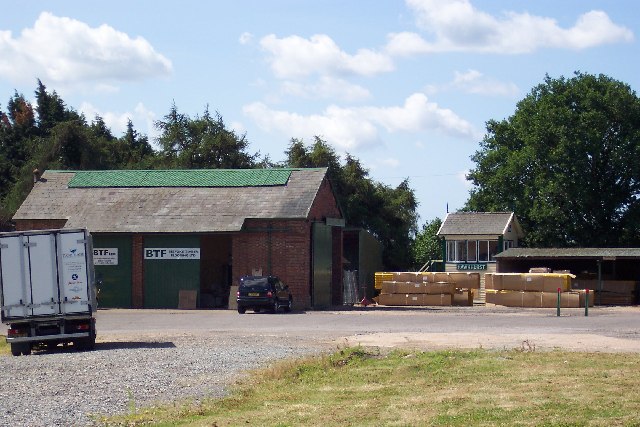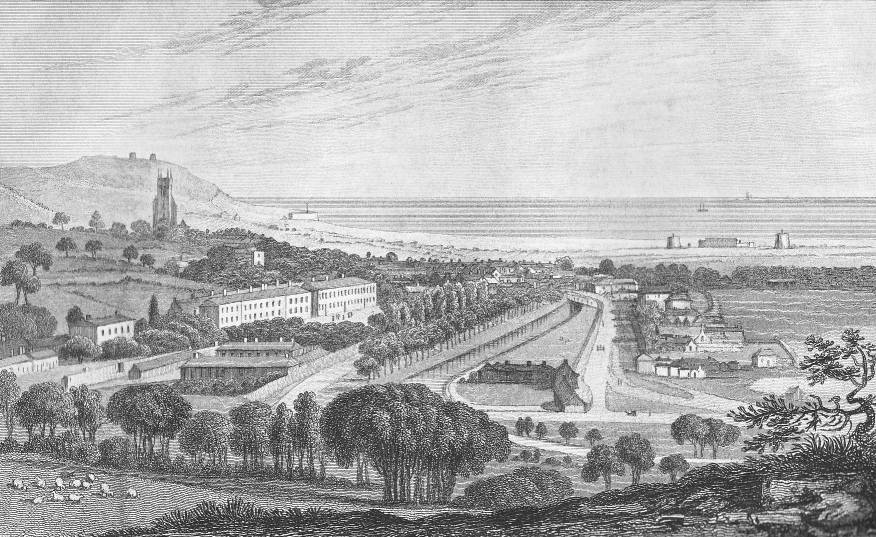|
Kent And East Sussex Railway
The Kent and East Sussex Railway (K&ESR) refers to both a historical private railway company in Kent and East Sussex in England, as well as a heritage railway currently running on part of the route of the historical company. Historical company Background By the mid 19th century, Tenterden was in the middle of a triangle of railway lines. The South Eastern Railway had opened its line from Redhill to Tonbridge on 12 July 1841. The line was opened as far as Headcorn on 31 August 1842 and to Ashford on 1 December 1843. The South Eastern Railway opened its line from Ashford to Hastings on 13 February 1851. The third part of the triangle was the line between Tonbridge and Hastings which had opened as far as Tunbridge Wells on 24 November 1846, Robertsbridge on 1 September 1851, Battle on 1 January 1852 and to St Leonards on 1 February 1852, running powers over the London, Brighton and South Coast Railways line to Hastings having been negotiated. The Ashford - Hastings lin ... [...More Info...] [...Related Items...] OR: [Wikipedia] [Google] [Baidu] |
Kent
Kent is a county in South East England and one of the home counties. It borders Greater London to the north-west, Surrey to the west and East Sussex to the south-west, and Essex to the north across the estuary of the River Thames; it faces the French department of Pas-de-Calais across the Strait of Dover. The county town is Maidstone. It is the fifth most populous county in England, the most populous non-Metropolitan county and the most populous of the home counties. Kent was one of the first British territories to be settled by Germanic tribes, most notably the Jutes, following the withdrawal of the Romans. Canterbury Cathedral in Kent, the oldest cathedral in England, has been the seat of the Archbishops of Canterbury since the conversion of England to Christianity that began in the 6th century with Saint Augustine. Rochester Cathedral in Medway is England's second-oldest cathedral. Located between London and the Strait of Dover, which separates England from m ... [...More Info...] [...Related Items...] OR: [Wikipedia] [Google] [Baidu] |
Robertsbridge Railway Station
Robertsbridge railway station is on the Hastings line in the south of England and serves the village of Robertsbridge, East Sussex. It is down the line from London Charing Cross. The station and all trains serving it are operated by Southeastern. History Robertsbridge was temporarily the terminus of the South Eastern Railway's (SER) "Hastings Line" from Tunbridge Wells. This section was opened on 1 September 1851, with the 5.99 mile (9.64 km) stretch to Battle following four months later. A connection was then made with the existing route to Hastings on 1 February 1852; the line connecting with Hastings having been opened by the SER on 13 February 1851, and which initially gave the Brighton, Lewes and Hastings Railway access to the latter town. A large station building was provided on the Down side, along with a signal box at the south end of the Down platform. Robertsbridge became a junction in 1900 with the opening of the ''Rother Valley Light Railway'' to Tent ... [...More Info...] [...Related Items...] OR: [Wikipedia] [Google] [Baidu] |
Maidstone
Maidstone is the largest town in Kent, England, of which it is the county town. Maidstone is historically important and lies 32 miles (51 km) east-south-east of London. The River Medway runs through the centre of the town, linking it with Rochester and the Thames Estuary. Historically, the river carried much of the town's trade as the centre of the agricultural county of Kent, known as the Garden of England. There is evidence of settlement in the area dating back before the Stone Age. The town, part of the borough of Maidstone, had an approximate population of 100,000 in 2019. Since World War II, the town's economy has shifted from heavy industry towards light industry and services. Toponymy Saxon charters dating back to ca. 975 show the first recorded instances of the town's name, ''de maeides stana'' and ''maegdan stane'', possibly meaning ''stone of the maidens'' or ''stone of the people''. The latter meaning may refer to the nearby megalith around which gather ... [...More Info...] [...Related Items...] OR: [Wikipedia] [Google] [Baidu] |
Hawkhurst Railway Station
Hawkhurst railway station was on the closed Hawkhurst Branch in Kent, England. Background The station was opened on 4 September 1893, when the line was extended from ; Hawkhurst became the new terminus, and although there were plans to extend the line to , these were never carried out. The station found itself in a slightly isolated and elevated position overlooking the Weald The Weald () is an area of South East England between the parallel chalk escarpments of the North and the South Downs. It crosses the counties of Hampshire, Surrey, Sussex and Kent. It has three separate parts: the sandstone "High Weald" in the ..., approximately from Hawkhurst itself. It had a single situated on the down side, and a short . The station was built as a through station, as it was proposed to extend the line to Tenterden but the extension was never built. The stationmaster's house is located to the south of the station as approached from the road. There was a two-road locomotive shed ... [...More Info...] [...Related Items...] OR: [Wikipedia] [Google] [Baidu] |
Goudhurst Railway Station
Goudhurst is a closed railway station on the closed Hawkhurst Branch in Kent, England. History The station originally opened on 1 October 1892 as '' Hope Mill, for Goudhurst & Lamberhurst'', when the line was opened from . It was named after the parish, but following the presentation of a petition to the Cranbrook & Paddock Wood Railway Company in November 1892, the name was changed to ''Goudhurst'' on 1 December 1892. The station was the terminus of the line for just over eleven months, until the extension to was opened on 4 September 1893. The station was approximately one mile to the west of the village of Goudhurst Goudhurst is a village and civil parish in the borough of Tunbridge Wells in Kent, England. It lies in the Weald, around south of Maidstone, on the crossroads of the A262 and B2079. The parish consists of three wards: Goudhurst, Kilndown and ... which was some 250 ft higher than the station, presenting a somewhat daunting task for a baggage-laden p ... [...More Info...] [...Related Items...] OR: [Wikipedia] [Google] [Baidu] |
Hawkhurst
Hawkhurst is village and civil parish in the borough of Tunbridge Wells in Kent, England. The village is located close to the border with East Sussex, around south-east of Royal Tunbridge Wells and within the High Weald Area of Outstanding Natural Beauty. Hawkhurst is virtually two villages: The Moor, to the south, consists mainly of cottages clustered around a large triangular green, while Highgate, to the north, features a colonnade of independent shops, two country pubs, hotels, a digital cinema in a converted lecture hall, and Waitrose and Tesco supermarkets. There are four designated conservation areas in Hawkhurst parish – one at Sawyers Green, two in Highgate (Highgate and All Saints' Church) and one at The Moor. There are also over 200 listed buildings across the parish. Since boundary changes in the 2010 general election, Hawkhurst is part of the parliamentary constituency of Tunbridge Wells, represented by Conservative Greg Clark. Prior to this it was in the Mai ... [...More Info...] [...Related Items...] OR: [Wikipedia] [Google] [Baidu] |
Wittersham
Wittersham is a small village and civil parish in the borough of Ashford in Kent, England. It is part of the Isle of Oxney. History The Domesday Book of 1086 does not mention Wittersham, but it does assign the manor of Palstre to Odo, Bishop of Bayeux. Palstre was only one of four places in the Weald, apparently, that had a church. The Domesday Book entry reads:- "In Oxenai hundred, Osbern Paisforiere holds Palestrei, from the Bishop. It is taxed at three yokes. Arable land for two ploughs. In demesne, nine smallholders have half a plough. There is a church, 2 servants, of meadow, 5 fisheries at twelve pence, woodland for the pannage of 10 hogs. In the time of Edward the Confessor, it was worth forty shillings, now sixty shillings. Edwy the priest held it for King Edward." An early variation of the village name may be ''Wyghtresham''. Manor Early in the 18th century, the manor came into the ownership of Thomas Brodnax or May of Godmersham Park, Kent. May changed hi ... [...More Info...] [...Related Items...] OR: [Wikipedia] [Google] [Baidu] |
Trams
A tram (called a streetcar or trolley in North America) is a rail vehicle that travels on tramway tracks on public urban streets; some include segments on segregated right-of-way. The tramlines or networks operated as public transport are called tramways or simply trams/streetcars. Many recently built tramways use the contemporary term light rail. The vehicles are called streetcars or trolleys (not to be confused with trolleybus) in North America and trams or tramcars elsewhere. The first two terms are often used interchangeably in the United States, with ''trolley'' being the preferred term in the eastern US and ''streetcar'' in the western US. ''Streetcar'' or ''tramway'' are preferred in Canada. In parts of the United States, internally powered buses made to resemble a streetcar are often referred to as "trolleys". To avoid further confusion with trolley buses, the American Public Transportation Association (APTA) refers to them as " trolley-replica buses". In the Un ... [...More Info...] [...Related Items...] OR: [Wikipedia] [Google] [Baidu] |
Hythe, Kent
Hythe () is a coastal market town on the edge of Romney Marsh, in the district of Folkestone and Hythe on the south coast of Kent. The word ''Hythe'' or ''Hithe'' is an Old English word meaning haven or landing place. History The town has mediaeval and Georgian buildings, as well as a Saxon/ Norman church on the hill and a Victorian seafront promenade. Hythe was once defended by two castles, Saltwood and Lympne. Hythe Town Hall, a neoclassical style building, was completed in 1794. Hythe's market once took place in Market Square (now Red Lion Square) close to where there is now a farmers' market every second and fourth Saturday of the month. Hythe has gardening, horse riding, bowling, tennis, cricket, football, squash and sailing clubs. Lord Deedes was once patron of Hythe Civic Society. As an important Cinque Port Hythe once possessed a bustling harbour which, over the course of 300 years, has now disappeared due to silting. Hythe was the central Cinque Port, sittin ... [...More Info...] [...Related Items...] OR: [Wikipedia] [Google] [Baidu] |
Paddock Wood
Paddock Wood is a town and civil parish in the borough of Tunbridge Wells in Kent, England, about southwest of Maidstone. At the 2001 Census it had a population of 8,263, falling marginally to 8,253 at the 2011 Census. Paddock Wood is a centre for hop growing. History Paddock Wood developed as a settlement during the second half of the 19th century as a result of the local hops industry. By 1900 it was a local transport hub with three railway lines at the railway station. Government Paddock Wood has three tiers of local government: parish, borough and county. Borough council Since 1974 Paddock Wood has formed part of the Borough of Tunbridge Wells. The borough is governed by a 48-member council. The town elects 4 borough councillors, with 2 each for the Paddock Wood East and Paddock Wood West wards. As of July 2022, one is a member of the Labour Party, one is a member of local action group Tunbridge Wells Alliance, and two are Independent. County council The upper tier of ... [...More Info...] [...Related Items...] OR: [Wikipedia] [Google] [Baidu] |
Cranbrook, Kent
Cranbrook is a town in the civil parish of Cranbrook and Sissinghurst, in the Weald of Kent in South East England. It lies roughly half-way between Maidstone and Hastings, about southeast of central London. The smaller settlements of Sissinghurst, Swattenden, Colliers Green and Hartley lie within the civil parish. The population of the parish was 6,717 in 2011. History The place name Cranbrook derives from Old English ''cran bric'', meaning Crane Marsh, marshy ground frequented by cranes (although more probably herons). Spelling of the place name has evolved over the centuries from ''Cranebroca'' (c. 1100); by 1226 it was recorded as ''Cranebroc'', then Cranebrok. By 1610 the name had become Cranbrooke, which evolved into the current spelling. There is evidence of early activity here in the Roman period at the former Little Farningham Farm where a substantial iron working site was investigated in the 1950s,in 2000 the site was the subject of a Kent Archaeological Soc ... [...More Info...] [...Related Items...] OR: [Wikipedia] [Google] [Baidu] |






